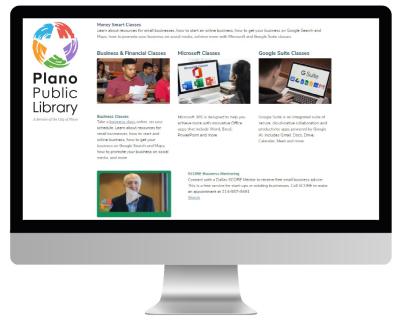Communities thrive when their members understand how money works, know who they can talk to about specific financial topics, and have access to quality, consumer-friendly learning materials.
Libraries are the perfect place for people to seek and find the best resources to build a strong financial future. A strong financial literacy effort includes a well-rounded and current collection (with topics ranging from the basics of banking and planning to save, to building credit, investing, estate planning and more), unbiased programs and experts, and knowledgeable staff who can direct library users to reputable organizations, helpful information and free tools.

Starting with staff will set a firm foundation upon which to build. All the resources in the world are of no benefit unless community members know where to find what they need. Informed library staff are the answer! Here are six tips for preparing staff to support financial literacy initiatives.
Survey staff knowledge and interests
Informed and prepared library staff are key to a successful financial education initiative. Find out what your staff know and what resources are unfamiliar to them, and get a sense of their confidence level in connecting patrons to financial literacy resources. Consider using the staff training needs assessment from Smart investing@your library. Simply completing an assessment can start staff thinking about financial topics and areas of need for information.
Identify credible resources to put to use
Many sources exist for financial information, but not all are unbiased or accurate. Make it simple for staff by identifying a handful of solid sources, and selecting specific websites and publications as a starting point. You can rely on the Consumer Financial Protection Bureau (CFPB), Federal Reserve Banks, Federal Deposit Insurance Corporation (FDIC) and Federal Trade Commission (FTC), Financial Industry Regulatory Authority (FINRA) and Cooperative Extension, to name a few.
Expand your collection to support financial literacy for all ages
Assess your current print and digital collections for breadth and timeliness. Do you have resources for every age group? Do your collections include basic introductions to financial topics such as money, credit, investing, saving, and budgeting? Check with your collection vendors to see what they already have and what’s new. You can also refer to the FLIG LibGuide “Financial Literacy in Public Libraries: A Guide for Building Collections“ for recommendations. The CFPB Money As You Grow Bookshelf and Reading Guides for parents and caregivers ties children’s books to financial lessons. Other sources for current publications include educator websites and “Best of” lists from major money-related magazines. For something more interactive, check out the new Thinking Money for Kids site from ALA's Public Programs Office.

Build support for staff and patrons on the library website
It’s helpful for staff to have a referral source for library tools, services and programs related to financial literacy. Our library has a MoneySmart page on our website where patrons can find information on library workshops, databases and collection resources. We are in the process of adding more content on financial literacy to the library’s blog, such as book lists and program recaps with links to additional learning materials. This provides an accessible source of information and helps families navigate a vast sea of resources.
Provide training
Money can be a touchy subject, so providing staff with training gives them a clear starting point and builds confidence. The Dallas Federal Reserve Bank has provided training for Plano Public Library staff, enabling our staff to offer programs to the public utilizing their educational tools. All of this at no cost to the library or our patrons.
For self-paced online professional development courses, the Smartinvesting@yourlibrary site maintained by ALA and the FINRA Foundation includes 15 regularly updated modules created by and for library staff. The courses cover kids and money, managing difficult financial times, retirement and many other topics.
Be sure to remind library staff that they are not expected to be the experts! They are there to help patrons find the resources they need to explore financial literacy, like showing them books from the shelves, databases available with their library card, reputable financial institutions for additional information, and upcoming library programs.
Offer ways for staff to contribute
After surveying and training staff, facilitate conversations about their responses, experiences and areas for involvement. Make connections for those with ideas to expand programs, the collection or partnerships by sharing how to submit program ideas, procedures for suggesting items to add to the collection, and direction for identifying potential partners for classes. Staff could contribute by writing a blog post on a recent financial program, making connections to more library and local resources; or planning a marketing campaign to get financial literacy books checked out. The possibilities are endless!
The benefits of building financial literacy are numerous and far-reaching, and your community will thank you. Initiating conversations with staff, providing training, and offering opportunities for staff involvement in financial education will benefit your staff as professionals, and also as consumers, raising their level of financial knowledge and capability. Now that’s a winning proposition!
Kristin Linscott is the development coordinator and Rachel Yzaguirre is the community outreach librarian at Plano (Texas) Public Library. This blog post is part of a series written by ALA's Financial Literacy Interest Group and sponsored by the FINRA Investor Education Foundation.




